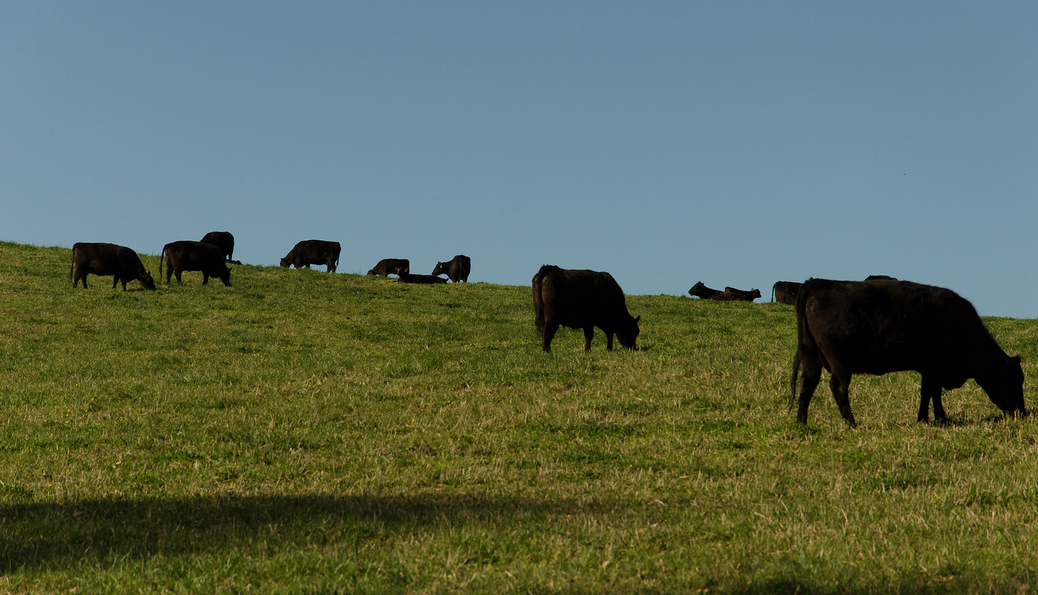Adele Harty
SDSU Extension Cow/Calf Field Specialist Additional Authors: Ken Olson

COVID-19 and the energy economy has had a dramatic negative impact on the ethanol industry, resulting in limited availability of corn distiller’s grains. This has changed availability and pricing of protein feeds. As cow/calf producers consider how this affects their feed purchases currently and into the future, there are some key points to consider and evaluate.
In South Dakota grazing operations, many of cows are currently out in pastures where cool-season grasses are greening up. This will have an impact on the potential need for continued protein supplementation this spring. If cattle are on warm-season grass dominated pastures that haven’t greened up yet or are being fed low-quality, protein deficient feeds in drylot, the availability and cost effectiveness of alternative protein feeds has changed. If there is a need for supplemental protein this spring and into the future, determining the most economical alternative to meet the cow’s nutrient requirements will be important. Using the products we are accustomed to may not currently be the best option.
Management Considerations
Here are some tips to help work through the current supplemental protein market situation:
Determine whether or not a protein supplement is needed.
If cows are grazing and cool-season grasses are greening up, they may be consuming adequate protein from rapidly growing green forage. Cows will always select a higher quality diet than the average of the standing forage, so if there is green grass available, they will be consuming it.
Evaluate the manure of the cow herd.
Is the manure hard and stacking up or is it loose? If the manure is loose to watery, cows are getting adequate to excess protein from their diet and do not need supplemental protein. For more information about evaluating manure as an indicator of protein in the diet see the article Monitoring Nutrient Status of Beef Cows. If the cow’s manure indicates adequate to excess protein in the diet, protein supplementation is a waste of feed and money, and adding excess protein could be detrimental to cow productivity. On the other hand, if the manure indicates that additional protein is needed, the following three points will help evaluate the most cost effective option.
Compare options.
Compare options on a cost per unit of nutrient (protein in this case) basis. This will allow an equal comparison between feeds. This calculation is $ per ton ÷ % dry matter ÷ % crude protein. Table 1 compares various protein supplements at current prices in western South Dakota.
| Feed | Price/ton | % DM | % CP | $/ton CP |
|---|---|---|---|---|
| Soybean mealab | $345 | 89 | 48 | $808 |
| Soybean mealac | $455 | 89% | 48 | $1065 |
| Alfalfa hayd | $120 | 88% | 16 | $852 |
| Dry distillers graina | $240 | 89% | 29 | $930 |
| 20% Range Cakea | $268 | 89% | 20 | $1505 |
| 30% Cooked Molasses Tuba | $922.80 | 75% | 30 | $4101 |
| 20% Cooked Molasses Tuba | $847.60 | 75% | 20 | $5650 |
a Prices from Dakota Mill and Grain, Philip, SD on April 17, 2020.
b Price for soybean meal in truck load.
c Price for soybean meal in 1 ton tote.
d Price from USDA-SD Dept of Ag Market News South Dakota Weekly Hay summary, Friday, April 17, 2020.
As seen in these examples, products vary greatly in price per ton of protein. The prices in most of these examples are from one source on the date indicated. Prices will vary among location and across time, so each producer should calculate price per ton of protein based on local pricing at the time of purchase. To compare multiple products, use the feed nutrient comparison calculator.
Consider equipment needs to store, handle, and deliver various feeds.
Select feeds that do not require new capital investments for equipment to store, handle or deliver, unless it will pencil out in the long term. What form is the feed in and can it be handled with the current equipment? Does it need to be fed in a bunk? Keep in mind delivery costs and labor associated with each feed. Remember that protein supplements do not have to be delivered everyday.
Waste can be costly.
During the winter months, it’s not uncommon to feed various loose or pelleted feeds on frozen sod, however now that the ground has thawed, any amount of precipitation will cause a greater portion of feed to be lost to waste in the mud. Depending on the product, feedbunks may be a necessity to minimize waste, which can then make some products more cost prohibitive than others. Evaluate waste potential and calculate that into overall cost for the supplement.
The Bottom Line
Changing availability of commonly used feedstuffs can require re-evaluation of the best options to replace feeds that become unavailable or too expensive to consider. Taking the time to look at the economics and evaluate protein supplements can pay off greatly by ensuring cattle nutrient requirements are met with the most economical feed options while optimizing performance. No two situations are alike and not all supplements work for every situation, but taking the time to find the best alternative will be beneficial to the bottom line.
